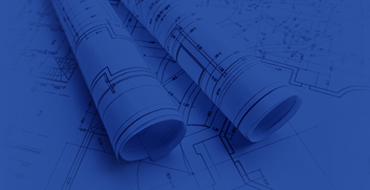-

Plumbing Design Best Practice
The term ‘Best Practice’ has been used as the indication that a higher level of care and attention will be exercised when providing a service to a client. This Case Study attempts to clarify what P.J. Wright & Associates Pty Ltd believes to be the definition of ‘Best Practice.'
So what is 'Best Practice'?
Over many years P.J. Wright & Associates Pty Ltd has been involved with representation before the courts and State Administrative Tribunal as ‘Expert Witnesses.' This association has allowed us to gain an insight into what is considered as ‘Best Practice.'
The minimum benchmark for approval, whether in relation to design, manufacturing or installation, is ‘compliance.' ‘Compliance’ is the basic level defined under codes, standard or legislation that needs to be achieved.
‘Best Practice’ is a higher level of quality that is developed from the minimum ‘compliance’ level. Through research and experience, comparisons are made to establish variables could affect the design solution.
These variables are assessed and where deemed appropriate design criteria, or parameters are adjusted to ensure the impact of the variables are minimised if not obviated.
The outcomes from the ‘Best Practice’ process results in a higher standard of quality and performance.Is 'Best Practice' subjective?
The client usually has a predetermined ‘subjective’ outcome that they require to be achieved by the design solution. The outcome will vary from project to project and client to client.
All ‘processes,' whether in manufacturing or design must be ‘objective,' as they must be consistent and achieve the required outcome. The ‘processes’ must have the ability to be assessed and monitored.
The difficulty is gauging the ‘objective’ process against a ‘subjective’ benchmark.
In order to minimise ‘subjectivity,' it is necessary for the ‘Best Practice’ process to incorporate all factors that affect design solution and ensure the client’s goals are achieved if not surpassed.'Best Practice' is a moving benchmark.
‘Best Practice’ is a developing level of standard, due to the constant changes from new technologies, design methods and products. Designs and installations completed ten years ago may not be considered ‘Best Practice’ by today’s standards.
Examples of factors that may alter the system performance are as follows:
• Changes to environmental conditions such as variable rainfall intensities; temperature; and pressure changes.
• Age of the system and general wear and tear.
• Increased demand or load on the system.All these factors result in the reduced performance of a system and an increased risk of failure over time. These factors must be considered under the ‘Best Practice’ process.
How do you achieve 'best practice' in design?
‘Best Practice’ takes into account the performance variables that may impact on a ‘compliant’ design solution. The analysis phase of ‘Best Practice’ is when all factors are taken into consideration, and mitigating actions are developed.
Comparison of design methodologies and techniques is undertaken against the required outcomes. The most suitable design method is adopted, and the process of design is commenced with comparisons made against ‘compliance’ design requirements.
A development of ‘safety in design’ analysis is undertaken and mitigating actions applied to the design solutions.
The analysis will identify all possible modifications that could be made to a design solution to address factors such as:
a. Known site conditions;
b. Future requirements of the project;
c. Industry-specific guidelines (e.g. export standards); and,
d. Company developed standards (e.g. internal engineering specifications).
If a basic ‘compliance’ outcome is required, the same ‘safety in design’ analysis is undertaken. The resultant mitigating actions are then presented to the client as ‘recommended design modifications’ to achieve a ‘Best Practice’ design solution.
The client can review and make informed decisions in relation to each modification.
Once the client approved design modifications are incorporated, this becomes the ‘Best Practice’ design solution for the project.
PJ Wright and Associates believe ‘Best Practice’ design principles are reflections of quality and professionalism that every client is entitled to regardless of the size or scale of their project. It is a decision to treat each project with the same level of care and due diligence.Contact our team on (08) 9443 3466 for any further information or email us on contact@pjwaa.com.au.

Hydraulic Services Design
PJ Wright & Associates specialises in plumbing and hydraulic services design and understands the importance of being able to provide our clients with a comprehensive hydraulic engineering consultancy service. We pride ourselves on producing the highest quality design package.
PJ Wright & Associates understand the needs of the ‘end user’are paramount when developing plumbing and hydraulic design solutions. This ensures that our designs are functional as well as cost effective.